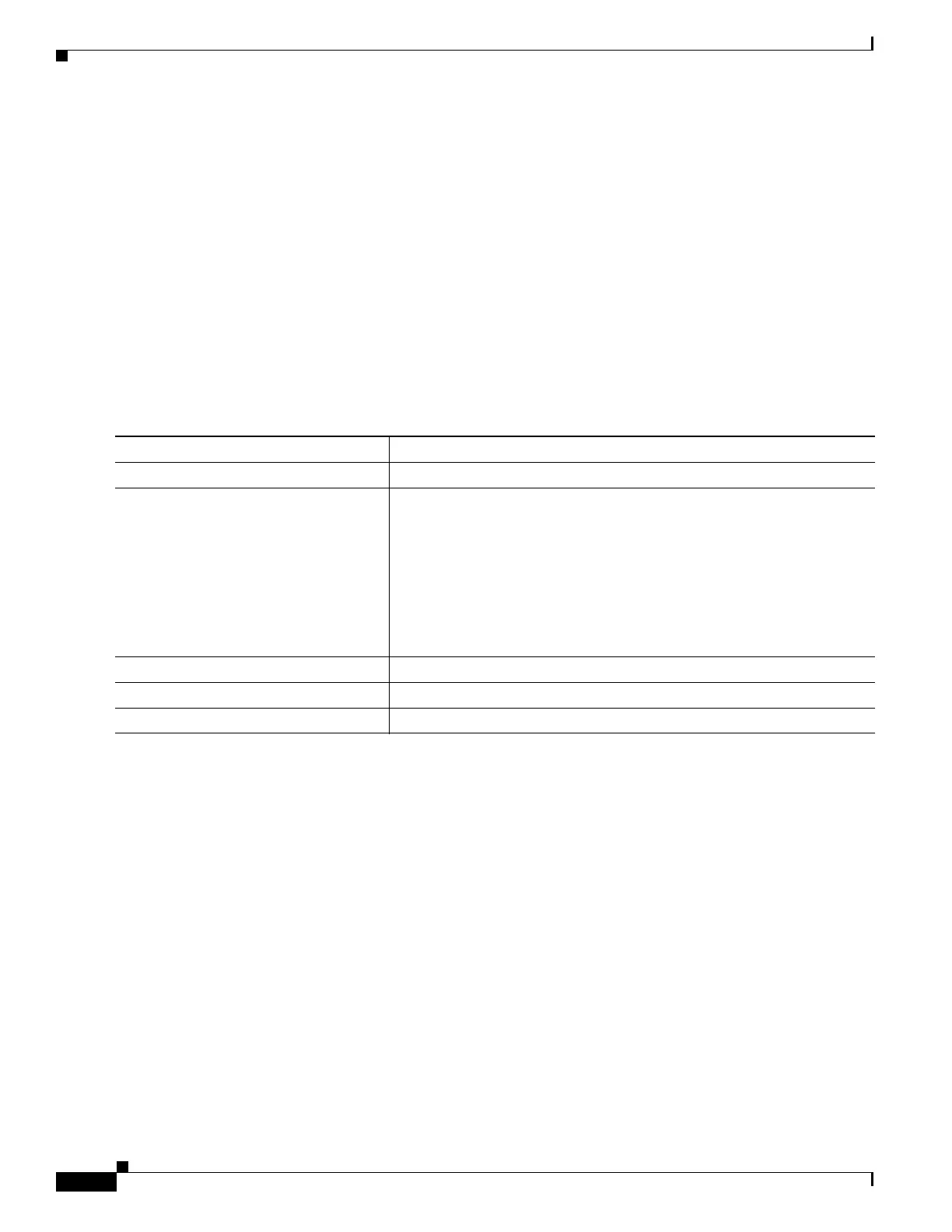318
Cisco 3900 Series, Cisco 2900 Series, and Cisco 1900 Series Integrated Services Routers Generation 2 Software Configuration Guide
Chapter Administering the Wireless Device
Managing the System Time and Date
Configuring the Time Zone
To manually configure the time zone, follow these steps, beginning in privileged EXEC mode.
SUMMARY STEPS
1. configure terminal
2. clock timezone zone hours-offset [minutes-offset]
3. end
4. show running-config
5. copy running-config startup-config
DETAILED STEPS
The minutes-offset variable in the clock timezone command in global configuration mode is available
for situations where a local time zone is a percentage of an hour different from UTC. For example, the
time zone for some sections of Atlantic Canada (AST) is UTC-3.5, where the 3 means 3 hours, and the
.5 means 50 percent. In this case, the necessary command is clock timezone AST -3 30.
To set the time to UTC, use the no clock timezone command in global configuration mode.
Configuring Summer Time (Daylight Saving Time)
To configure summer time (daylight saving time) in areas where it starts and ends on a particular day of
the week each year, follow these steps, beginning in privileged EXEC mode.
SUMMARY STEPS
1. configure terminal
2. clock summer-time zone recurring [week day month hh:mm week day month hh:mm [offset]]
3. end
Command Purpose
Step 1
configure terminal Enters global configuration mode.
Step 2
clock timezone zone hours-offset
[minutes-offset]
Sets the time zone.
Because the wireless device keeps internal time in UTC
1
, this command
is used only for display purposes and when the time is manually set.
• For zone, enter the name of the time zone to be displayed when
standard time is in effect. The default is UTC.
• For hours-offset, enter the hours offset from UTC.
• (Optional) For minutes-offset, enter the minutes offset from UTC.
1. UTC = universal time coordinated
Step 3
end Returns to privileged EXEC mode.
Step 4
show running-config Verifies your entries.
Step 5
copy running-config startup-config (Optional) Saves your entries in the configuration file.

